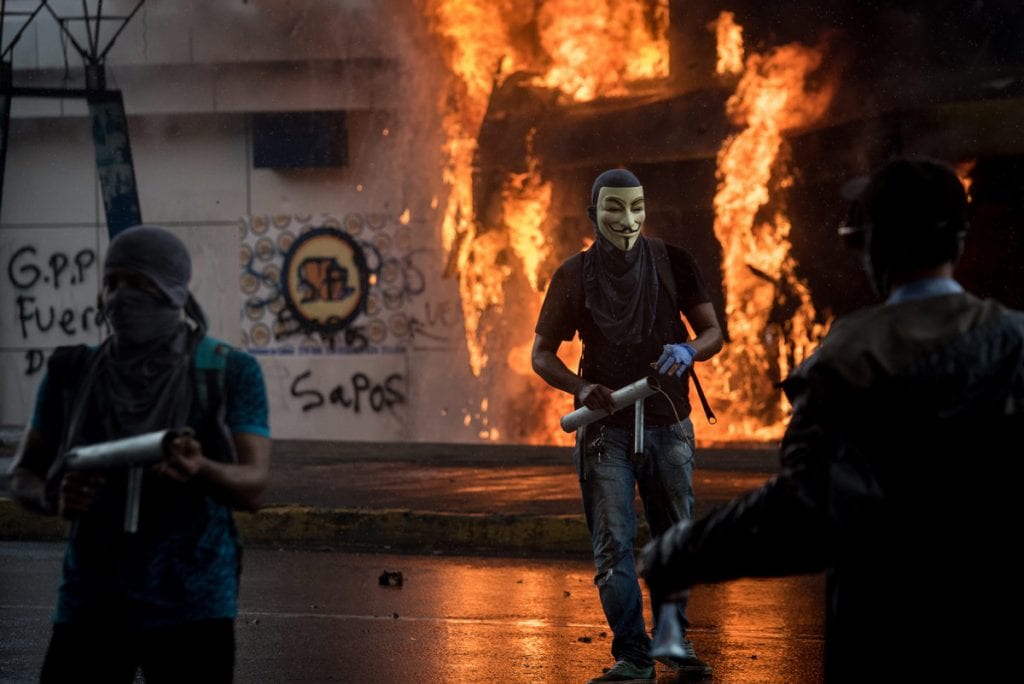Ortega’s “Justice” System: Legalities Are Out the Window

Unbelievable argument from the judges: “We’re responding according to the procedural moment we’re in.”
Irregularities include witnesses that contradict each other and accusations of crimes defined by a law that was passed after the events.
By Juan Carlos Bow (Confidencial)
HAVANA TIMES – Illegal detentions, witnesses that contradict each other, prisoners presented to the court after the legal deadline, and officials that have no evidence to present; these are just some of the irregularities that have been accepted by the judges in charge of processing 300 political prisoners. These prisoners have all been arrested for participating in civic protests against the regime of Daniel Ortega and Rosario Murillo.
The majority of the political prisoners have been accused of terrorism, illicit arms and weapons trafficking and disrupting public services, obstructing government functions and disrespect for the authorities.
Hansell Vasquez Ruiz, Kevin Rodrigo Espinoza and Marlon Fonseca Roman were sentenced to 17 years and 6 months in jail for terrorism, use of restricted arms and disruption of public services stemming from a fire at the radio station Tu Nueva Radio Ya, that occurred at the end of May.
This is the only case in which someone has been prosecuted for burning or attacking a communications media outlet; other cases of arson involving independent stations such as Leon’s Radio Dario, which burned entirely to the ground in April, have been ignored.
Judgements based on a law created after the events
Julio Montenegro, lawyer with the Permanent Commission for Human Rights in Nicaragua (CPDH), alleges that one of the inconsistencies of the case is that the youth were declared guilty under the Law Against Money Laundering, Financing Terrorism and the Proliferation of Weapons of Mass Destruction, approved by the National Assembly on July 16 and published on July 20 in the official registry La Gaceta. However, the events occurred on July 11, prior to this.
“For [the law] to apply, the events would have to have happened after July 20. The law must be a previous step and the actions posterior,” Montenegro explains.
Officer: “It was dark”
Another inconsistent element is that the witnesses for the prosecution affirmed that “all” the radio station burned, and as proof presented three photos: one of the façade in flames; one of a studio where a rug burned, and one of a warehouse with old objects and tires.
“I asked the officer if she could see how the inside of the radio station was affected, apart from the front. She answered that she couldn’t, because it was dark,” noted the defense lawyer in charge of defense for the three youth. “I can’t explain how an expert in ocular inspections isn’t going to take close note of the details. She should be able to tell me if the interior was or wasn’t affected.”
Masked witnesses with codes instead of names
Montenegro, who is also defending university leader Edwin Carcache, adds that the use of witnesses who wear ski masks and are identified only by codes has proliferated. This is common practice in trials of major drug-traffickers.
However, he notes that the masked subjects “never have videos, photos, audio recordings or records of intercepted telephone calls. How do we know that the coded witness has real knowledge of the case?”
In the cases of Hansell, Kevin and Marlon, the witness known as “code one” couldn’t state whether police security tape was used during the arrest, whether the area had been cordoned off, if photographs were taken of the evidence, or if gloves were used to handle it. “That ‘code’ knew absolutely nothing when I asked him. Indications are that he doesn’t know or that he wasn’t present during the arrest,” said Montenegro.
Judges accept grave irregularities
Another element common to all four cases of the young people, and to almost all the political prisoners, is that they’ve been presented before the authorities after the legally established 48-hour deadline. Edwin Carcache was taken before a judge eight days after his detention.
“The judges don’t reject cases of detentions by the paramilitaries, they don’t consider the late presentations. They pull out an old sentence of the Supreme Court that was formally used in drug trafficking cases; that the irregular actions of the authorities that preceded the appearance before a judge doesn’t prevent that judge from decreeing preventive jail time,” indicated the CPDH lawyer.
According to Montenegro, some judges have commented to them that they “accept the illegal arrests and the late presentations because they have to respond according to the procedural moment.” However, as Montenegro sees it: “the judges have entered into a state of complicity with the illegal acts.”
No police or paramilitary member has been accused
Nine citizens, residents of Tipitapa, were condemned to 15 – 24 years in prison for terrorism. Carlos Bonilla Lopez was sentenced to 90 years in jail for the death of a member of the riot squad and supposedly the intention of killing another four officials.
The prosecution also accuses Etner Sequeira Velasquez for pulling down the “trees of life” [large metal tree sculptures placed around Managua streets in a project closely associated with Vice President Rosario Murillo], and student leader Amaya Coppens for terrorism and other crimes.
Nonetheless, in the six months since the protests began, no police or paramilitaries have been legally processed.
At the beginning of August, the prosecution accused former army official Pierson Gutierrez Solis, 42, of homicide and illegal firearm possession in the case of the murder of Rayneia Lima, a young Brazilian medical student from the American University. The prosecution asked for a 16-year prison sentence for Gutierrez Solis. The trial was over in 35 minutes.






Dear Jacques, if you have a subscription you must go into that service to discontinue. Best regards, the editor
don t send me Havana Times no more